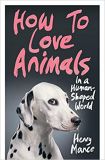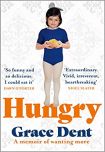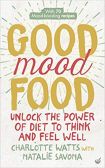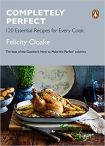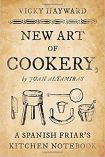Difference between revisions of "Newest Cookery Reviews"
| Line 2: | Line 2: | ||
[[Category:New Reviews|Cookery]]__NOTOC__ <!-- Remove --> | [[Category:New Reviews|Cookery]]__NOTOC__ <!-- Remove --> | ||
<!-- INSERT NEW REVIEWS BELOW HERE--> | <!-- INSERT NEW REVIEWS BELOW HERE--> | ||
| + | {{Frontpage | ||
| + | |isbn=1529418100 | ||
| + | |title=Bruno's Challenge and Other Dordogne Tales | ||
| + | |author=Martin Walker | ||
| + | |rating=4 | ||
| + | |genre=Short Stories | ||
| + | |summary=I'm not usually a fan of short stories - I find it all too easy to put the book down between stories and forget to pick it up again - but I am a fan of Martin Walker's [[Martin Walker's Commissar Bruno Courreges Mysteries in Chronological Order|Bruno Courreges Mysteries]] so the temptation to read ''Bruno's Challenge'' was hard to resist and I'm rather glad that I didn't even try. For those new to the series, there's an excellent introduction that will tell you all you need to know about who's who and the background to why Bruno is in St Denis. | ||
| + | }} | ||
{{Frontpage | {{Frontpage | ||
|isbn=1787332098 | |isbn=1787332098 | ||
| Line 140: | Line 148: | ||
|genre=Cookery | |genre=Cookery | ||
|summary=It's just about a year since I read Amelia Freer's [[Eat. Nourish. Glow.: 10 easy steps for losing weight, looking younger and feeling healthier by Amelia Freer|Eat. Nourish. Glow.]], a book which quietly impressed me and which I hung on to (not something I do regularly) and have referred back to many times for inspiration and a quick boost to the spirit. Most of the principles behind the book seemed sound, although I wasn't prepared to go down the wheat-free road as I've no reason to think that I'm sensitive to gluten - and I do wonder how most of the world would be fed if we all gave up eating wheat - but if I felt the book had a shortcoming, it was the lack of recipes. Well, that's now been remedied. | |summary=It's just about a year since I read Amelia Freer's [[Eat. Nourish. Glow.: 10 easy steps for losing weight, looking younger and feeling healthier by Amelia Freer|Eat. Nourish. Glow.]], a book which quietly impressed me and which I hung on to (not something I do regularly) and have referred back to many times for inspiration and a quick boost to the spirit. Most of the principles behind the book seemed sound, although I wasn't prepared to go down the wheat-free road as I've no reason to think that I'm sensitive to gluten - and I do wonder how most of the world would be fed if we all gave up eating wheat - but if I felt the book had a shortcoming, it was the lack of recipes. Well, that's now been remedied. | ||
| − | |||
| − | |||
| − | |||
| − | |||
| − | |||
| − | |||
| − | |||
| − | |||
}} | }} | ||
Move on to [[Newest Crafts Reviews]] | Move on to [[Newest Crafts Reviews]] | ||
Revision as of 15:28, 22 November 2021
Review ofBruno's Challenge and Other Dordogne Tales by Martin WalkerI'm not usually a fan of short stories - I find it all too easy to put the book down between stories and forget to pick it up again - but I am a fan of Martin Walker's Bruno Courreges Mysteries so the temptation to read Bruno's Challenge was hard to resist and I'm rather glad that I didn't even try. For those new to the series, there's an excellent introduction that will tell you all you need to know about who's who and the background to why Bruno is in St Denis. Full Review |
Review ofHow to Love Animals in a Human-Shaped World by Henry ManceWhen we do think about animals, we break them down into species and groups: cows, dogs, foxes, elephants and so on. And we assign them places in society: cows go on plates, dogs on sofas, foxes in rubbish bins, elephants in zoos, and millions of wild animals stay out there, somewhere, hopefully on the next David Attenborough series. I was going to argue. I mean, cows are for cheese (I couldn't consider eating red meat...) and I much prefer my elephants in the wild but then I realised that I was quibbling for the sake of it. Essentially that quote sums up my attitude to animals - and I consider myself an animal lover. If I had to choose between the company of humans and the company of animals, I would probably choose the animals. I insisted that I read this book: no one was trying to stop me but I was initially reluctant. I eat cheese, eggs, chicken and fish and I needed to either do so without guilt or change my choices. I suspected that making the decision would not be comfortable. Full Review |
Review ofHungry: A Memoir of Wanting More by Grace DentI'm always relieved when Grace Dent is one of the judges on Masterchef. You know that you're going to get an honest opinion from someone whom you sense does real food rather than fine dining most of the time. You also ponder on how she can look so elegant with all that good food in front of her. I've often wondered about the woman behind the media image and Hungry: A Memoir of Wanting More is a stunning read which will make you laugh and break your heart in equal measures. Full Review |
Review ofThis Cookbook is Gross by Susanna Tee and Santy GutierrezThe misuse of language is a modern disease. Too many times something is described as awesome or stupendous, but were you truly awed by it? Or stupefied? People just seem to pluck words out of the ether and pretend that they are the correct ones. Are the recipes in Susanna Tee and Santy Gutierrez's 'This Cookbook is Gross' truly gross? For once the language is not overplayed. These recipes may taste nice, but in appearance, they are absolutely vile. Full Review |
Review ofGood Mood Food: Unlock the Power of Diet to Think and Feel Well by Charlotte Watts and Natalie SavonaI thought I was getting a cookbook: I liked the idea of a series of recipes which would make me feel happy. For once this isn't a case of 'if it sounds too good to be true, it probably is' - it's a case of getting something which could change your life for the better - for good - rather than a quick fix. Full Review |
Review ofCompletely Perfect: 120 Essential Recipes for Every Cook by Felicity CloakeIt's a novel concept for a cookery book: these are not Felicity Cloake's recipes but the best ones she found to do a particular job - the job of delivering the best meal, the Completely Perfect meal of the title. Think of it as the equivalent of a comparison site for when you want to renew the car insurance and then taking the best elements out of each recipe to make perfection. There's nothing cutting edge here: it's the sort of food which we've been eating for decades and probably will be for decades to come. There's a reason for that: roast chicken followed by apple crumble works and providing that you don't have a vegetarian or a vegan at table, it's a meal which is unlikely to do other than go down well. Full Review |
Review ofVintage Kitchenalia by Emma KayOver the half-century and more that I've been preparing meals on a regular basis I've seen food preparation move from being just something you did to an obsession akin to a religion. My first kitchen had nothing in the way of luxury - it was there to make meals as nutritiously and economically as possible: my current kitchen is not quite state of the art, but it's equipped to a high standard and is a pleasure to work in. But what of all the equipment which went before, which paved the way to what we have now? Emma Kay is going to give you a quick trip through the history. Full Review |
Review ofThe Science of Food: An exploration of what we eat and how we cook by Marty JopsonI've always believed that if you understood why something worked in a particular way it was very easy to remember how it worked and what you needed to do. The food we eat is no exception to this rule and The One Show resident scientist Marty Jopson has undertaken to explain how things work in the kitchen - and he covers everything from the type of knives we use through to the food of the future. Best of all, he does it in language that even a science illiterate like me can understand. Full Review |
Review ofJuan Altamiras' New Art of Cookery: A Spanish Friar's Kitchen Notebook by Vicky HaywardIn 1745 a Spanish friary cook, Juan Altamiras, published the first edition of his New Art of Cookery, Drawn From the School of Economic Experience. It contained more than two hundred recipes for meat, poultry, game, salted and fresh fish, vegetables and desserts. The style was informal, chatty and humorous on occasions and it was aimed, not at those who could afford to cook on a grand scale, but at those with more modest budgets, who sometimes needed to cook for large numbers. Whilst the ingredients were - for the most part - modestly priced there is a stress on the careful combination of flavours and aromas. Spices are used conservatively and the bluntness of some Moorish cooking is eschewed in favour of something much more subtle and we see influences from Altamiras' own region, Aragon, the Iberian court and the New World. Full Review |
Review ofFasting and Feasting - The Life of Visionary Food Writer Patience Gray by Adam FedermanFor more than thirty years, Patience Gray--author of the celebrated cookbook Honey from a Weed--lived in a remote area of Puglia in southernmost Italy. She lived without electricity, modern plumbing, or a telephone, grew much of her own food, and gathered and ate wild plants alongside her neighbours in this economically impoverished region. She was fond of saying that she wrote only for herself and her friends, yet her growing reputation brought a steady stream of international visitors to her door. This simple and isolated life she chose for herself may help explain her relative obscurity when compared to the other great food writers of her time: M. F. K. Fisher, Elizabeth David, and Julia Child. So it is not surprising that when Gray died in 2005, the BBC described her as an almost forgotten culinary star. Yet her influence, particularly among chefs and other food writers, has had a lasting and profound effect on the way we view and celebrate good food and regional cuisines. Gray's prescience was unrivalled: She wrote about what today we would call the Slow Food movement--from foraging to eating locally--long before it became part of the cultural mainstream. Full Review |
Review ofSimple Fare: Spring and Summer by Karen MordechaiKaren Mordechai's family history has its roots in the Jerusalem of the 1950s when people from around the globe were coming together in a young country and forming their own way of living. When the family then emigrated to the United States they brought this way of cooking with them, along with the tradition of sharing and enjoying food. Mordechai believes that food's ability to bring people together is unparalleled and that the food you make is a compilation of the way you have lived. Thinking back over the food we eat, that is so true and for the first time, I looked on a recipe book as an elegant way of seeing someone else's history. Full Review |
Review ofFive Ways to Cook Asparagus (and Other Recipes): the Art and Practice of Making Dinner by Peter MillerWhen you've been producing meals for around about half a century the chances are that, like me, you have a fairly regular set of menus which you produce. Hopefully, it's not quite in the 'fishcakes! Goodness is it Friday already?' realm but you probably have something in your culinary locker for every occasion. It takes a very good book to make you settle down and actually read what it has to offer and it's an exceptional one where you end up with lots of dog-eared pages for recipes which you're going to try. The inspiration to read Five Ways to Cook Asparagus was simple and serendipitous - I'd just come home with the first of the season's English asparagus when the book arrived in the post. I couldn't not have a look, now could I? Full Review |
Review ofGood Clean Food: Plant-Based Recipes That Will Help You Look and Feel Your Best by Lily KuninI've got to begin by outlining a bias: I don't like food fads. There's a very good reason for avoiding gluten if you are coeliac, but if it's simply a food choice then you make life more difficult for people who must avoid gluten. The same point applies to a lot of other food 'intolerances'. I believe in eating a balanced diet but will happily admit that I have my own no-go areas: I don't eat processed sugars because they're empty calories and after a couple of weeks without them I discovered that I don't actually like the taste. I don't touch caffeine and haven't done so since I discovered what it did to my blood pressure. Having said all this, I'm quite happy to read books which do advocate avoiding certain food groups, simply because (a) there might be something in it and (b) people who've had to the inventive to create a varied diet with restricted ingredients often come up with some excellent recipes. And that was how I came to Good Clean Food. Full Review |
Review ofA Food Guide to Lowering Blood Pressure: 6 Simple Steps by Yuchi YangYuchi Yang has been a registered dietitian for over twenty years and she's allowing us the benefit of her knowledge to help us to reduce our blood pressure without taking medication, although she does stress that if you are taking medication you shouldn't stop doing so without consulting your doctor. You can reduce your BP in six steps, which are actually a lot simpler than they sound. Does it work? Yes, it does: I've been eating this way for more than two years and I've gone from having 'very worrying' blood pressure readings to getting a smile when they're taken and being told that my BP is perfectly normal - and that's without taking medication of any sort. Full Review |
Review ofItalian Street Food by Paola BacchiaBooks about Italian food are everywhere, with recipes for pizza, pasta dishes and all the usual suspects. In a winter which seems to be starting hard all too early what I wanted was sunshine - and the sort of food which you find on the Italian streets and in those bars which only the locals know about. It's the sort of food which you eat on the move, or leaning against the bar - tables and chairs don't usually come into the equation. For the most part, it doesn't aspire to being healthy - frying plays a larger part than it does in a virtuous diet and it is a little short on fruit and veg - but we can all be a bit naughty on occasions, can't we? Full Review |
Review ofGruffalo Crumble and Other Recipes by Julia Donaldson and Axel SchefflerIt is hard to imagine, but the original Gruffalo book came out almost twenty years ago. This is a franchise that just keeps rolling on. Certainly, you can buy the book or the sequel, but if you visit a shop you will find Gruffalo toys, cards, even egg cups. Each year brings with it a new idea of how to push the Gruf and pals. 2016 is the year of the recipe book, but will it live up to the quality of the original? Full Review |
Review ofThe Kew Gardens Children's Cookbook: Plant, Cook, Eat by Joe Archer and Caroline CraigI grew up in the immediate post-war period. Growing your own vegetables had been a necessity in the war and it was still a habit for those who had a bit of garden, so The Kew Gardens Children's Cookbook was a real pleasure for me, as well as a touch of nostalgia. The principle is very simple: show children how to grow their own vegetables and then how to transform them into delicious food. It sounds simple, doesn't it? Well, it might come as a surprise, but it is! Full Review |
Review ofCook. Nourish. Glow. by Amelia FreerIt's just about a year since I read Amelia Freer's Eat. Nourish. Glow., a book which quietly impressed me and which I hung on to (not something I do regularly) and have referred back to many times for inspiration and a quick boost to the spirit. Most of the principles behind the book seemed sound, although I wasn't prepared to go down the wheat-free road as I've no reason to think that I'm sensitive to gluten - and I do wonder how most of the world would be fed if we all gave up eating wheat - but if I felt the book had a shortcoming, it was the lack of recipes. Well, that's now been remedied. Full Review |
Move on to Newest Crafts Reviews

